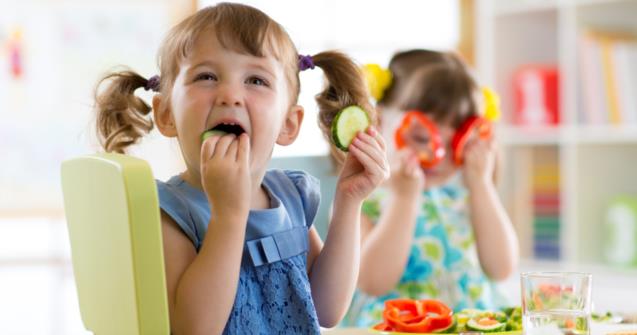
How to teach a child to eat independently
Whether it happens naturally or not, sooner or later, children will want to feed themselves. Some will express an interest at an early age. They will begin by putting small pieces of food placed on their highchair tray in their mouth. For others, this desire may not appear for quite some time. As is the case with all developmental spheres, developing children's autonomy is important. Although kindergarten may be several years away, by the time children start going to school, they must be able to feed themselves independently. Even when children are very young, there are interventions that can help prepare them so that eventually, they will be able to eat independently.
What can you expect at different ages and stages?
6-12 months: Children can hold their bottle and eat tiny pieces of soft foods placed on their highchair tray.
1-2 years old: They can drink from a sippy cup (with a lid, a spout, and two handles). They may begin to use a spoon, but it can be messy.
2-3 years old: They can drink from a glass using a straw without making a mess. They may begin to use a fork to eat.
3-4 years old: They can eat with a fork and use it to prick food items.
4-5 years old: They are somewhat autonomous when it comes to feeding themselves. They can use a pitcher to pour themselves something to drink.
5-6 years old: They can butter their bread as well as cut their vegetables and meat using a knife that isn't too sharp.
Now that you know what is "normal", it is important to mention that you may sometimes have to create situations to encourage children to feed themselves. If you automatically feed the children in your group, they will not be inclined to express their needs and develop their autonomy. To help them, you must begin by executing the task for them, then with them, and finally, letting them perform it on their own. With this process, children will progressively learn to feed themselves while respecting their needs and limits.
Beyond that, here are a few simple tricks that will help you teach children to feed themselves.
- Create a pleasant atmosphere during meals by establishing a simple routine and playing soft, calm music.
- Act as a model for the children in your group. Sit at the table with them and take the time to eat with them. Prepare everything ahead of time and set anything you think you may need nearby to ensure you can remain seated.
- Provide attractive utensils and dishes that are adapted for children. Plastic items are best with little ones.
- Adapt your expectations. The guidelines provided above indicate what children should be able to do per their age. Be sure to adapt your requests to their capacities.
- To help children learn to use a spoon, place your hand over theirs and draw the spoon up to their mouth. Their brain will register the "I am eating with a spoon" movement.
Of course, you can use games and activities to teach children how to learn to use a spoon, cut food items, or pour from a pitcher. For example, let them use a plastic knife to cut modeling dough, encourage them to fill glasses with water using a pitcher outdoors on a hot summer day, or invite them to "feed" dolls. Through play, children will develop different abilities that can be quite useful during meals. You may even have less messes to clean up...but I can't guarantee that!
Maude Dubé, Specialized educator

 Home
Home Theme activities
Theme activities
 Babies and toddlers
Babies and toddlers
 Arts and crafts
Arts and crafts
 Science
Science
 Creative recipes
Creative recipes
 Tips and tricks
Tips and tricks
 Special needs
Special needs
 Extra activities
Extra activities
 Educ-TV
Educ-TV
 Newsletter
Newsletter  Online store
Online store Educatall club
Educatall club


